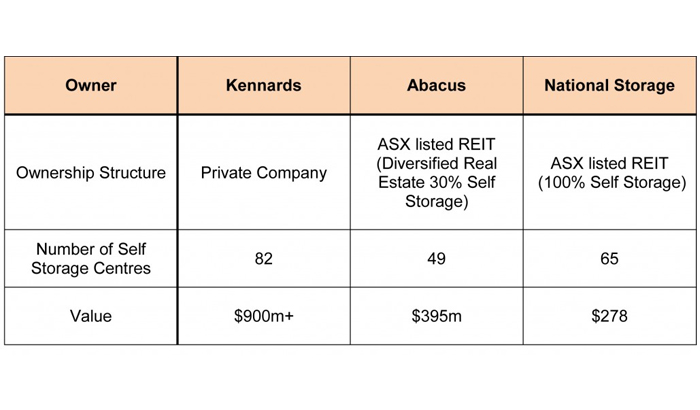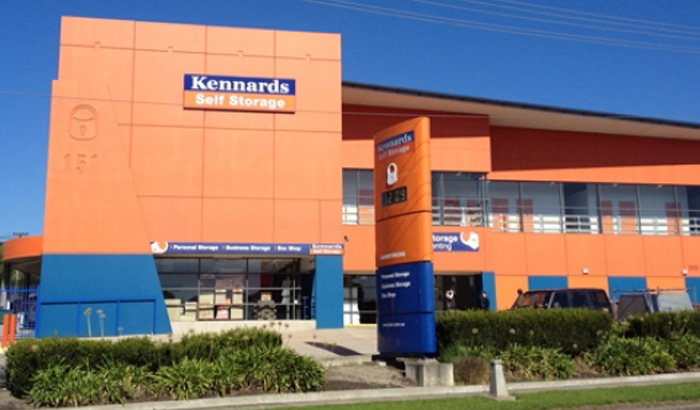Self Storage Finance in the Australia Market Place
The self storage industry in Australia has grown to be in reach of most of Australia’s population.
The paradox of Australian demographics is that despite the country’s enormous land area (7,692,024 square kilometres) and a modest population of 23.5 million people, Australia is actually one of the most urbanised populations in the world. 89% of Australia’s population live in urban areas and is ranked 17th on the ladder. It is mostly only beaten by city or island states such as Singapore, Bermuda, Hong Kong and Cayman Islands.
It is little wonder then that self storage has emerged and prospered so well in Australia. Globally, the self storage idea owes its origins to the entrepreneurs, in the U.S.A.. Canada quickly followed with Australia being the third to embrace the concept.
In Australia self storage began in 1973, when Neville Kennard (my Father) developed the first spaces in the Sydney suburb of Moorebank.
Fast forward forty years and Australia boasts over 1,000 storage centres, with several major operators and numerous significant second-tier operators.
The major operators and investors can be proud of their sophistication and investment skills and compare well with global peers.
Australia has just 2 REIT’s with self storage assets and only one pure self storage REIT.
One REIT, Abacus Property Group, has the second largest self storage asset investment portfolio with 49 properties values at $395 million.
Australia’s first self storage REIT was only born in December 2013, National Storage began with assets valued at $278 million some of which are leased, some wholly-owned and some in a Joint Venture with Chicago based Heitman LLC. Since listing National and related entities has acquired 9 new storage centres.
The largest owner of self storage assets in Australia is Kennards Self Storage (owned and operated by the Authors family). Kennards is a privately-owned family company with 82 storage centres currently trading, of which the company wholly-owns 66 of them; with a total value exceeding $900 million.

Australian Self Storage Finance Climate
In the wake of the GST, foreign Banks left Australia and non-traditional lenders almost disappeared. Self Storage funding was left with four domestic Banks, and until 2012 only three had an appreciation and appetite for self storage finance.
In 2012, ANZ joined NAB, Westpac and Commonwealth Bank to participate in financing the self storage sector. The additional competition was a pleasing development for self storage owners, but just for lenders remains a small field or lending competition.
Going-Concern Funding Pictures
The Banks have illustrated they have a much stronger appetite to lend to proven mature self storage centres than new development.
The Banks will consider the cash flow, asset quality value and borrower track record in their assessment of a loan.
Loans are typically limited to 50-55% of the asset value, with a covenant limit of 60%.
Interest cover ratio (interest as a proportion of EBITDA) is often the more meaningful borrowing constraint. The I.C.R. often imposed by Banks is 2 times or 2.5 times (i.e. annual EBITDA must not be less than 2.5 times annual interest expense).
In respect of loan security, going-concern lending will typically be non-recourse to the borrower. The asset is the only security the Bank has recourse against.
Loan margins are refunded to the Bank Swap Rate (BBSY or BBSW). Margins are in addition to the Swap Rate reset monthly, if on a floating interest rate.
New Development Lending
Australian Banks have proven much more cautious about funding new self storage development in the last few years.
The Banks wear some scars from losses of misguided development and lending provided pre-GFC.
They are very concerned about a proponent’s track record and backing.
Loan to value ratio does not exceed 50%, so there is significant equity required.
ICR is provided a step-up structure to enable rent-up without immediately defaulting, so hurdles must be met at 1, 2 and 3 year milestones.
In addition, Banks will require additional security often in the form of personal guarantees.
Margins over the Bank Swap Rate are typically 220BPS to 300BPS for new project lending.
It is clear the Banks have tightened their new project lending requirements in a wise attempt to avoid the errors of some pre-GFC self storage lending.
Margins will depend on asset quality, ICR and borrower capacity and reputation. Margins range from 150BPS to 250BPS.
Recently published in US Journel. Mini Storage Messenger October 2014
Categories
- Business Storage
- Car, RV and Boat Storage
- Centre Expansions and Upgrades
- Corporate
- Culture
- Customer Feedback
- Deposit Boxes
- Gun Storage
- Industry Facts
- Kennards Supporting The Community
- KSS In The News
- Latest News
- Locker Lovers
- Moving Boxes
- Neville Kennard
- New Storage Centres
- Press Releases
- Region Guides
- Sam Kennard
- Self Storage
- Wine Storage
Other stories of interest
Kennards Self Storage Brunswick set to open in Winter 2026 with 1,739 units and over 12,800 square metres of rentable space
Discover how North Lakes’ rapid growth is creating a demand for more storage solutions in Northern Brisbane.
We’re excited to announce that Kennards Storage Meadowbrook in QLD will officially open its doors mid-December!






